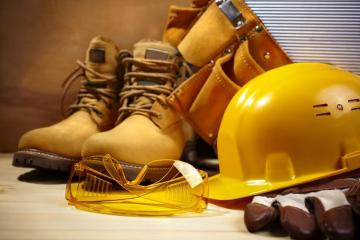You have been the new plant safety manager for a little over two months. During this timeframe you have had the opportunity to review the limited number of safety procedures left in your office by your predecessor and you are beginning to move forward with your safety responsibilities by following the requirements in the procedures.
As part of the Plant Manager’s commitment to safety (our second blog of this series) you have had regularly scheduled meetings with the plant manager to discuss relevant plant activities. Additionally, you have written a standard for “When OSHA Comes Knocking”, so you know your organization is ready. Just when you think you are starting to get a grasp on your new role and you are feeling pretty relaxed, you receive a phone call from the receptionist….OSHA has just arrived!
Following the procedure you wrote, you are well prepared for OSHA’s visit, so don’t panic. This post will highlight what to do and what to expect when OSHA arrives.
First Things First
Step 1. As detailed in post three, request that the receptionist escort the compliance officer (CO), without delay, to the pre-determined conference/meeting room.
Step 2. Ask the receptionist to contact the Plant Manager and the team you identified in your procedure for OSHA visits and request they report to the conference room to meet with the CO.
Step 3. Notify your Corporate Group that OSHA has arrived and follow their instructions, if any.
The three steps listed above should be done expeditiously. As a general rule, the CO should not be kept waiting for more than 15 minutes. If members of your team are in meetings, the OSHA visit takes priority.
An OSHA visit can typically be broken down into four parts:opening conference, records review, walk-around inspection, and closing conference. We’ll cover the first two parts today, and be back on Wednesday with the remaining two.
Opening Conference
Listen and Learn
Once team members have been assembled, the CO will conduct an opening conference. He or she will show official credentials to those present, including a photo ID with a serial number. During the opening conference, you should introduce the members of your team and identify who is the designated contact with whom the CO should coordinate all activities.
During the opening conference, the CO will explain the purpose and scope of their visit. You will learn if the inspection is due to imminent danger, fatality or catastrophe, complaint or referral, programmed inspection, special emphasis program, or follow up. (A programmed inspection is aimed at individual workplaces that have experienced high rates of injuries or illnesses, or at specific high-hazard industries.)
The opening conference is also a time to learn what the CO wants to see or do. Make sure you focus on listening during the opening conference and don’t volunteer information.
Setting Ground Rules
If the complaint could involve trade secret areas, confirm with the CO that photographs taken of the area or confidential documents relating to the area will be noted as trade secret in the OSHA file.
Inform the CO of the personal protective equipment required during the facility walk-through and request that they follow these requirements. Ensure that all members of your team accompanying the inspector also have the required protective equipment and follow plant safety rules.
Once you have a sense of what the inspector is there for, don’t be afraid to challenge the scope of the inspection. If the inspection is due to a complaint and it appears the CO is attempting to expand the investigation beyond the contents of the complaint, reiterate the contents of the complaint and keep the inspector focused.
Don’t be afraid to ask questions, but remain calm and polite. Questions you may want to ask include:
- What are the next steps in the inspection?
- How long does the CO expect to be at the facility?
Document, Document, Document
Remember to take copious notes of everything discussed during the opening conference and retain the notes for future reference. If the visit is the result of a complaint, ask to have a copy of the complaint. Note that the identity of the individual(s) issuing the complaint is confidential and will not be seen on the document.
Records Review
The CO will ask for certain documents to review--as a general rule, do not volunteer documents that are not specifically requested. Documents that are typically requested include those that are required to be kept and maintained by an OSHA standard such as: Injury and Illness Records, written Hazard Communication Program, written Control of Hazardous Energy Program, and documentation of the training required by various OSHA standards.
If the CO asks for records that are not required by an OSHA standard, contact your Corporate Safety Department or your legal counsel for direction.
Keep the CO focused. If the visit has been triggered by an employee complaint, only records that are related to that complaint should be requested and provided. For instance, the Control of Hazardous Energy written program should not be requested for a complaint about lack of hearing protection.
Make certain the records you provide are complete and up-to-date. Remember that records must be produced in a timely manner; therefore it is important to know the location of all required OSHA written programs and records. If these records are not produced in a timely manner, citations and/or penalties may result. Ensure you keep a copy of all records provided to OSHA.
What’s Next?
Once you’ve had your opening conference and done the records review, it’s time to head out into the facility for the walk-around inspection. Read on to Part 2 for a full overview of what to expect, and how to be prepared.
Download our complete guide for new plant safety managers here.
Want more news and insights like this?
Stay in the loop with our monthly e-newsletter, The New Leaf. We’re here to keep you informed, enlightened, and entertained with the latest in EHS and sustainability. Don’t miss out on the insights and stories that matter to you!✨ Ready to turn over a new leaf? Sign up now!
Have any questions?
Contact us to discuss your environment, health, safety and sustainability needs today.





